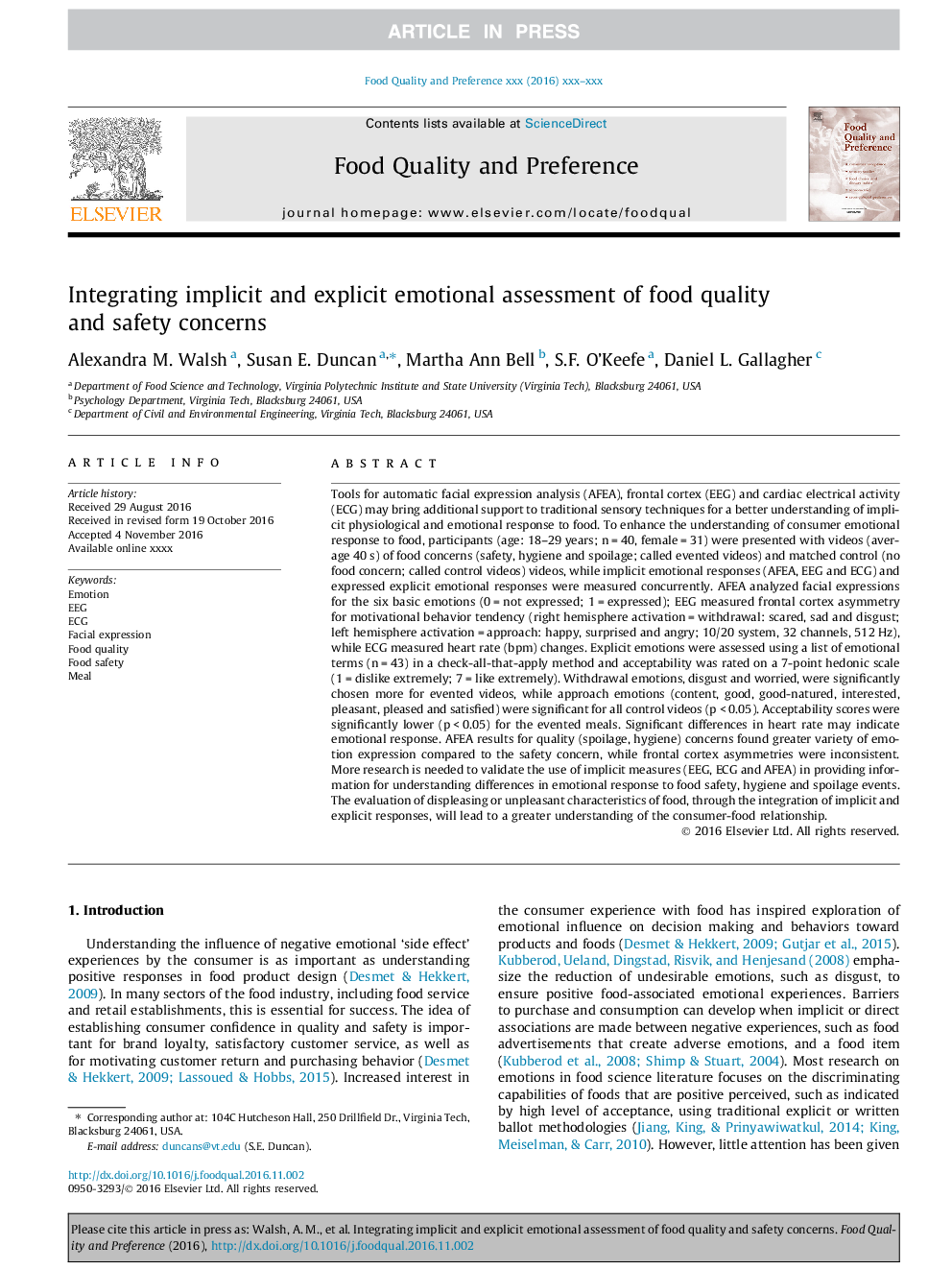Tools for automatic facial expression analysis (AFEA), frontal cortex (EEG) and cardiac electrical activity (ECG) may bring additional support to traditional sensory techniques for a better understanding of implicit physiological and emotional response to food. To enhance the understanding of consumer emotional response to food, participants (age: 18â29 years; n = 40, female = 31) were presented with videos (average 40 s) of food concerns (safety, hygiene and spoilage; called evented videos) and matched control (no food concern; called control videos) videos, while implicit emotional responses (AFEA, EEG and ECG) and expressed explicit emotional responses were measured concurrently. AFEA analyzed facial expressions for the six basic emotions (0 = not expressed; 1 = expressed); EEG measured frontal cortex asymmetry for motivational behavior tendency (right hemisphere activation = withdrawal: scared, sad and disgust; left hemisphere activation = approach: happy, surprised and angry; 10/20 system, 32 channels, 512 Hz), while ECG measured heart rate (bpm) changes. Explicit emotions were assessed using a list of emotional terms (n = 43) in a check-all-that-apply method and acceptability was rated on a 7-point hedonic scale (1 = dislike extremely; 7 = like extremely). Withdrawal emotions, disgust and worried, were significantly chosen more for evented videos, while approach emotions (content, good, good-natured, interested, pleasant, pleased and satisfied) were significant for all control videos (p < 0.05). Acceptability scores were significantly lower (p < 0.05) for the evented meals. Significant differences in heart rate may indicate emotional response. AFEA results for quality (spoilage, hygiene) concerns found greater variety of emotion expression compared to the safety concern, while frontal cortex asymmetries were inconsistent. More research is needed to validate the use of implicit measures (EEG, ECG and AFEA) in providing information for understanding differences in emotional response to food safety, hygiene and spoilage events. The evaluation of displeasing or unpleasant characteristics of food, through the integration of implicit and explicit responses, will lead to a greater understanding of the consumer-food relationship.


